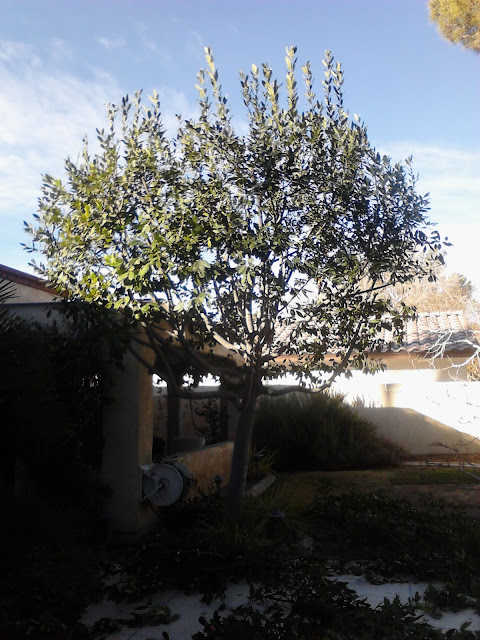Q. My bay leaf bush developed lots of brown leaves. The plant is in our courtyard facing
north. There are 3 more of these plants
in this courtyard not affected with this problem. A few gardenias next to this plant have the
same problem. What is causing it and
what is the remedy?
 |
| Bay leaves and gardenia leaves both brown from summer heat. Both plants prefer to grow in a soil amended with compost and woodchips. |
A. Bay laurel, sometimes called “sweet bay”, is used for
cooking and usually grown into a small tree about 20 feet tall and 20 feet
wide. You can prune this tree into a shrub but be sure you have room for four
of them. Their planting distances apart would be 10 to 15 feet if pruned every
year.
The browning of leaves of one
and not the others is typically water or soil related. If it’s water related,
the side and plants facing or receiving the most light will have more brown
leaves than sides sheltered from the light. If this is a soil problem then the
brown leaves would be distributed more evenly throughout the plant.
Check for Plugged Emitters
Check for plugged or blocked
drip emitters. In late spring or early summer these trees should get watered
about twice a week. Probably in the summer when it is hot then maybe three
times a week, four at the most. Always skip one day when watering these plants.
Amend the Soil and Cover it With Woodchips
The color and “dig-ability” of
the soil surrounding it should give you a clue if there is a soil problem. Loose,
dark brown or chestnut colored soils will be fine for both plants. Woodchips
that will rot for future soil improvement keeps the soil healthy if applied on
top of the soil under these plants.
